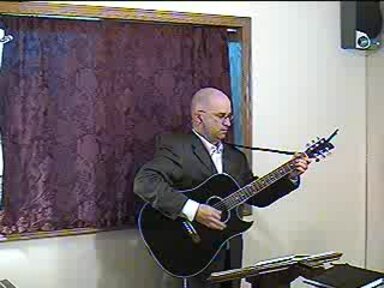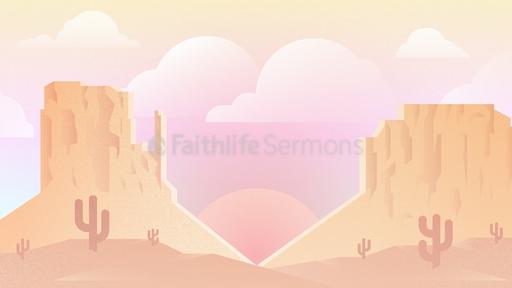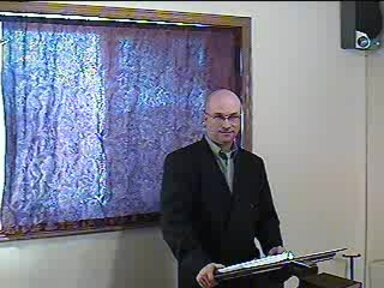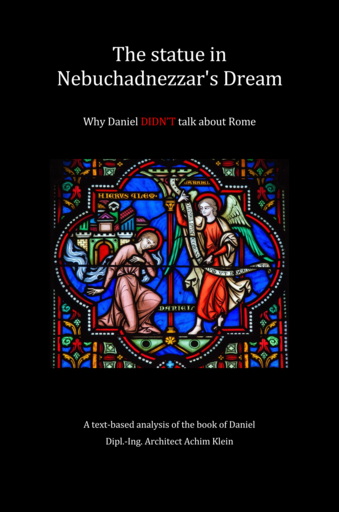Daniel 3.1-Nebuchadnezzar Erects A Gold Statue, Ninety Feet Tall, Nine Feet Wide On The Plain Of Dura In The Province Of Babylon
Wenstrom Bible Ministries
Pastor-Teacher Bill Wenstrom
Thursday May 24, 2012
Daniel: Daniel 3:1-Nebuchadnezzar Erects A Gold Statue, Ninety Foot Tall, Nine Foot Wide On The Plain Of Dura In The Province Of Babylon
Lesson # 78
Please turn in your Bibles to Daniel 3:1.
This evening we will study Daniel 3:1, which records Nebuchadnezzar the king of Babylon erecting a gold statue of himself, ninety feet tall, nine feet wide in the plain of Dura in the province of the city of Babylon.
Daniel 3:1 Nebuchadnezzar the king made an image of gold, the height of which was sixty cubits and its width six cubits; he set it up on the plain of Dura in the province of Babylon. (NASB95)
“Nebuchadnezzar the king made an image of gold” is composed of the masculine singular form of the proper name neḇû∙ḵǎḏ∙ně(ʾ)ṣ∙ṣǎr (נְבוּכַדְנֶאצַּר) (neb-oo-kad-nets-tsar), “Nebuchadnezzar” and then we have the masculine singular form of the noun mě∙lěḵ (מֶלֶךְ) (meh´-lek), “king” which is followed by the third person masculine singular peʿal (Hebrew: qal) active perfect form of the verb ʿǎḇǎḏ (עֲבַד) (ab-ad´), “made” and then we have the masculine singular form of the noun ṣelēm (צְלֵם) (tseh´-lem), “an image” which is followed by the particle dî (דִּי) (dee), “of” and then we have the masculine singular noun dehǎḇ (דְּהַב) (deh-hab´), “gold.”
The verb ʾǎḇǎḏ means “to sculpture” and is used with Nebuchadnezzar as its subject and a gold statue as its object indicating that the king “sculptured” an image composed of gold.
Of course, he commissioned someone to perform this task.
It denotes forming an image or representation from a solid material which in our context is gold.
The noun ṣelēm means “statue, a sculpted image to be worshipped as a god” indicating that Nebuchadnezzar sculptured a “statue” or “image.”
The noun dehǎḇ means “gold” indicating that Nebuchadnezzar’s statue of himself was made of this material.
Gold was the most valuable of all metals and in the ancient world was indicative of wealth and prosperity in biblical times.
It had a wide variety of uses and was employed extensively in both the tabernacle and the temple.
Gold was of great value (cf. Isaiah 60:17; See also Joshua 6:18-19,24; 1 Kings 20:1-6; 2 Kings 7:8; 14:14; 2 Chronicles 21:3; Job 28:12-19).
Gold was relatively rare (Isaiah 13:12) and was mined from the earth (Job 28:5-6; cf. Genesis 2:11-12).
It was refined by fire (Revelation 3:18; cf. Numberds 31:21-23; Job 28:1; Proverbs 17:3; 27:21; Zechariah 13:9; Malachi 3:3; 1 Peter 1:7).
“The height of which was sixty cubits and its width six cubits” is composed of the masculine singular construct form of the noun rûm (רוּם) (room), “the height of” which is followed by the third person feminine singular pronominal suffix hî(ʾ) (הִיא) (he), “which” and then we have the feminine plural form of the noun ʾǎm∙mā(h) (אַמָּה) (am-maw´), “cubits” which is modified by the masculine plural cardinal number šit∙tîn (שִׁתִּין) (shit-teen´), “sixty” and then we have the masculine singular construct form of the noun peṯāy (פְּתָי) (peth-ah´ee), “width” which is modified by the third person feminine singular pronominal suffix hî(ʾ) (הִיא) (he), “which” and then we have the feminine plural form of the noun ʾǎm∙mā(h) (אַמָּה) (am-maw´), “cubits” which is modified by the noun šēṯ (שֵׁת) (shayth), “six.”
The noun rûm means “height” referring to the tallness of a spatial object and here it refers to the “height” of Nebuchadnezzar’s statue.
The noun peṯāy means “width” as a spatial dimension and refers to the “width” of this gold statue.
The noun ʾǎm∙mā(h) appears twice in Daniel 3:1 and in each instance, the word means “cubit” which was the distance from the tip of a man’s middle finger to the end of his elbow when his hand was held flat and straight in the plane of his forearm, which is about 18 inches.
The first time the word appears it is modified by the cardinal number šit∙tîn, which means “sixty.”
Thus, assuming a length of 18 inches for the standard cubit, this gold image stood ninety feet tall.
The second time the noun ʾǎm∙mā(h) occurs, it is modified by the noun šēṯ, which means “six.”
Thus, again assuming a length of 18 inches for the standard cubit, this gold image was nine feet wide.
“He set it up on the plain of Dura in the province of Babylon” is composed of the third person masculine singular hafʿel (Hebrew: hiphil) active perfect form of the verb qûm (קוּם) (koom), “he set up” which is followed by the third person masculine singular pronominal suffix hû(ʾ) (הוּא) (who), “it” and then we have the preposition b- (בְּ־) (beth), “on” and its object is the feminine singular construct form of the noun biq∙ʿā(h) (בִּקְעָה) (bik-aw´), “the plain of” which is modified by the masculine singular proper noun dû∙rā(ʾ) (דּוּרָא) (do-raw), “Dura” and then we have the preposition b- (בְּ־) (beth), “in” and its object is the feminine singular construct form of the noun meḏî∙nā(h) (מְדִינָה) (med-ee-naw´), “the province of” which is modified by the feminine singular proper noun bā∙ḇěl (בָּבֶל) (baw-bel´), “Babylon.”
The verb qûm means “to cause to stand up, to erect, to set up” and is used with Nebuchadnezzar as its subject and the ninety foot tall and nine foot wide gold image as its object.
Thus, the word refers to the king “erecting” or “setting up” this gold statue in the plain of Dura.
The noun biq∙ʿā(h) means “plain” referring to an extensive area of level or rolling treeless country.
The noun biq∙ʿā(h) is modified by the proper noun dû∙rā(ʾ), “Dura” which is a name which is still common today in Mesopotamia and means “walled place.”
Pentecost writes “Dura was a common name in Mesopotamia for any place that was enclosed by mountains or a wall. ‘The province of Babylon’ (cf. 2:48) seems to require a location close to the city of Babylon itself from which Nebuchadnezzar ruled his kingdom. Archeologists have uncovered a large square made of brick some six miles southeast of Babylon, which may have been the base for this image. Since this base is in the center of a wide plain, the image’s height would have been impressive. Also its proximity to Babylon would have served as a suitable rallying point for the king’s officials.”
The noun meḏî∙nā(h) means “province” referring to a governmental administrative district and here it refers to the province of the city of Babylon.
The proper noun bā∙ḇěl refers to the province of Babylon as indicated by the noun meḏî∙nā(h), “province,” which is modifying it.
The Babylonian empire was divided into provinces or satrapies, of which Babylon was one.
Thus, this proper noun refers to the province of the city of Babylon.
Daniel 3:1 Nebuchadnezzar the king sculptured an image composed of gold, its height ninety feet, its width nine feet. He erected it on the plain of Dura in the province of the city of Babylon. (Interpretative translation)
Daniel 3:1 records Nebuchadnezzar the king of Babylon sculpturing an image composed of gold, which was ninety feet tall and nine feet wide.
It was erected on the plain of Dura in the province of the city of Babylon.
This action taken by the king is the direct result of Daniel’s interpretation in Daniel 2:38, which records Daniel telling him that he was the head of gold of the statue.
There are some commentators who suggest like Archer that the statue was not of himself but of one of the Babylonian gods, like Nabu.
However, there is an obvious connection between the head of gold in the statue in Nebuchadnezzar’s dream in Daniel chapter 2 and the gold statue constructed by the king in chapter 3.
That the events recorded in chapter 3 follow the events recorded in chapter 2 is indicated by the fact Daniel’s three friends are functioning in their new positions of authority (3:12) to which they were appointed by Nebuchadnezzar (2:49) per Daniel’s request.
Furthermore, chapter 4 records the Lord judging Nebuchadnezzar and deposing him for seven years and giving a mind of an animal resulting like the king acting like an animal for those years.
This was to bring the king to the place where he acknowledges the Lord’s sovereignty over him and that he is subordinated to the Lord.
Lastly, Daniel told Nebuchadnezzar in Daniel 2:38 that wherever members of the human race, wild animals of the field or birds of the sky live, the God ruling the heavens has given them into his power.
Consequently, God has caused him to rule over each and every one of them.
Thus, we see Nebuchadnezzar, an unregenerate man interpreting this revelation from Daniel as giving him authority to demand their worship, which of course was not the response God wanted from him.
He wanted the king to worship Him rather than demand the worship of himself.
The construction of this image of himself was due to his megalomania, which the Lord deals with in chapter 4, which records the Lord’s response to the arrogance of Nebuchadnezzar as recorded in chapter 3.
Nebuchadnezzar’s actions in constructing an image of himself to be worshipped, was not unusual in the ancient world.
The Assyrian kings also set up statues of themselves symbolizing their dominion.
Also, the Hellenistic kings did the same.
The Roman emperors deified themselves as well.
Nebuchadnezzar’s gold statue is surpassed by the Colossus at Rhodes, which was reported to be just over one hundred feet tall.
The unusual thing about the gold image built by Nebuchadnezzar is that the width is only ten percent of the height.
The width of a properly proportioned human figure would normally be about twenty-five percent of the height.
If this statue is human shaped and nine feet wide, we would expect the statue to be thirty-five or forty feet tall.
This would then require a pedestal of fifty-plus feet.
Thus, this structure which stood ten stories tall and only nine feet wide would be unstable.
However, as Leupold points out monumental figures were primarily pillars and maybe square having feet and at the top a human bust (Leupold, H.C. Exposition of Daniel; page 137; Baker Book House; Grand Rapids, Michigan; 1949; Reprinted 1969 by Baker Book House Company)
Many commentators argue that the statue was not composed of solid gold but rather was composed of wood overlaid with gold since it was common to make idols in the ancient in this fashion (See Isaiah 40:19; Jeremiah 10:3-9).
Also, the Ark of the Covenant and many of articles in the tabernacle were composed of acacia wood overlaid with gold (Exodus 25-27; 37:25; 39:38; 40:5).
Some like Archer contend that there was not enough gold in Babylon to make a statue ninety feet tall and nine feet wide which was composed of solid gold.
However, there is no authoritative evidence which indicates that Nebuchadnezzar did not have such fabulous wealth or not.
In fact, Herodotus describes two large statues in Marduk’s temple in Babylon, which were both of solid gold.
Furthermore, the text of Daniel 3:1 does not say it was made of wood overlaid with gold but simply gold.
If it were made of wood overlaid with gold, the text would have said this just as it does when describing the articles in the tabernacle such as the Ark of the Covenant.
Herodotus writes “In the Babylonian temple there is another shrine below, where there is a great golden image of Zeus, sitting at a great golden table, and the footstool and the chair are also gold; the gold of the whole was said by the Chaldeans to be eight hundred talents' weight. [2] Outside the temple is a golden altar. There is also another great altar, on which are sacrificed the full-grown of the flocks; only nurslings may be sacrificed on the golden altar, but on the greater altar the Chaldeans even offer a thousand talents' weight of frankincense yearly, when they keep the festival of this god; and in the days of Cyrus there was still in this sacred enclosure a statue of solid gold twenty feet high. [3] I myself have not seen it, but I relate what is told by the Chaldeans. Darius son of Hystaspes proposed to take this statue but dared not; Xerxes his son took it, and killed the priest who warned him not to move the statue.”
Based upon the proportions given by Daniel that the statue was ninety feet tall and nine feet wide, we find the volume to be 3,645 cubic feet or 4,400,000 pounds.
Now, the price of gold as of April 21, 2012 is $ 1,641 a troy ounce.
There are 16 ounces in a pound.
Thus, today this statue would have cost Nebuchadnezzar $115,526,400,000.







